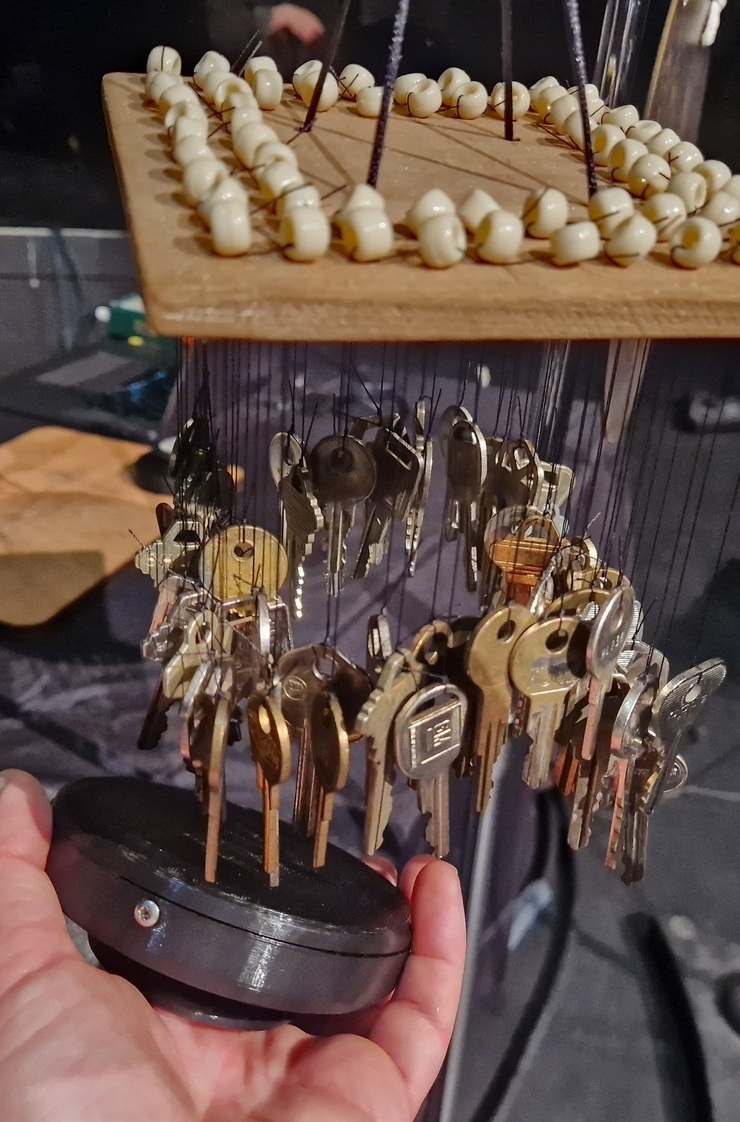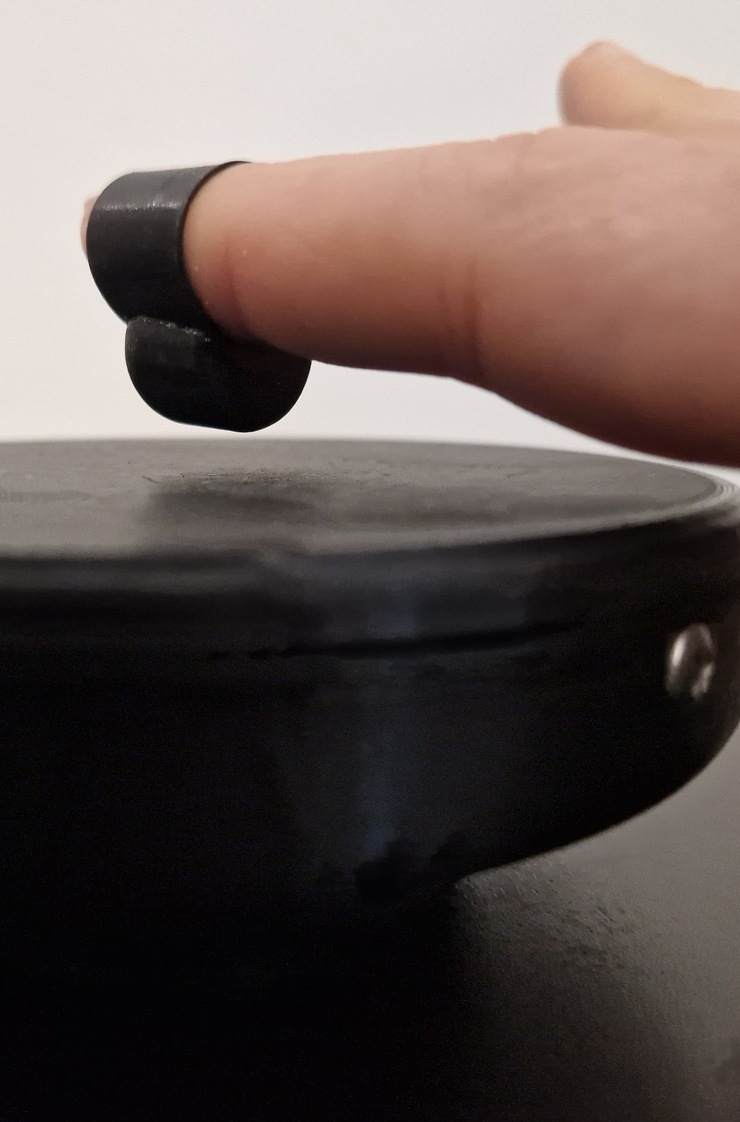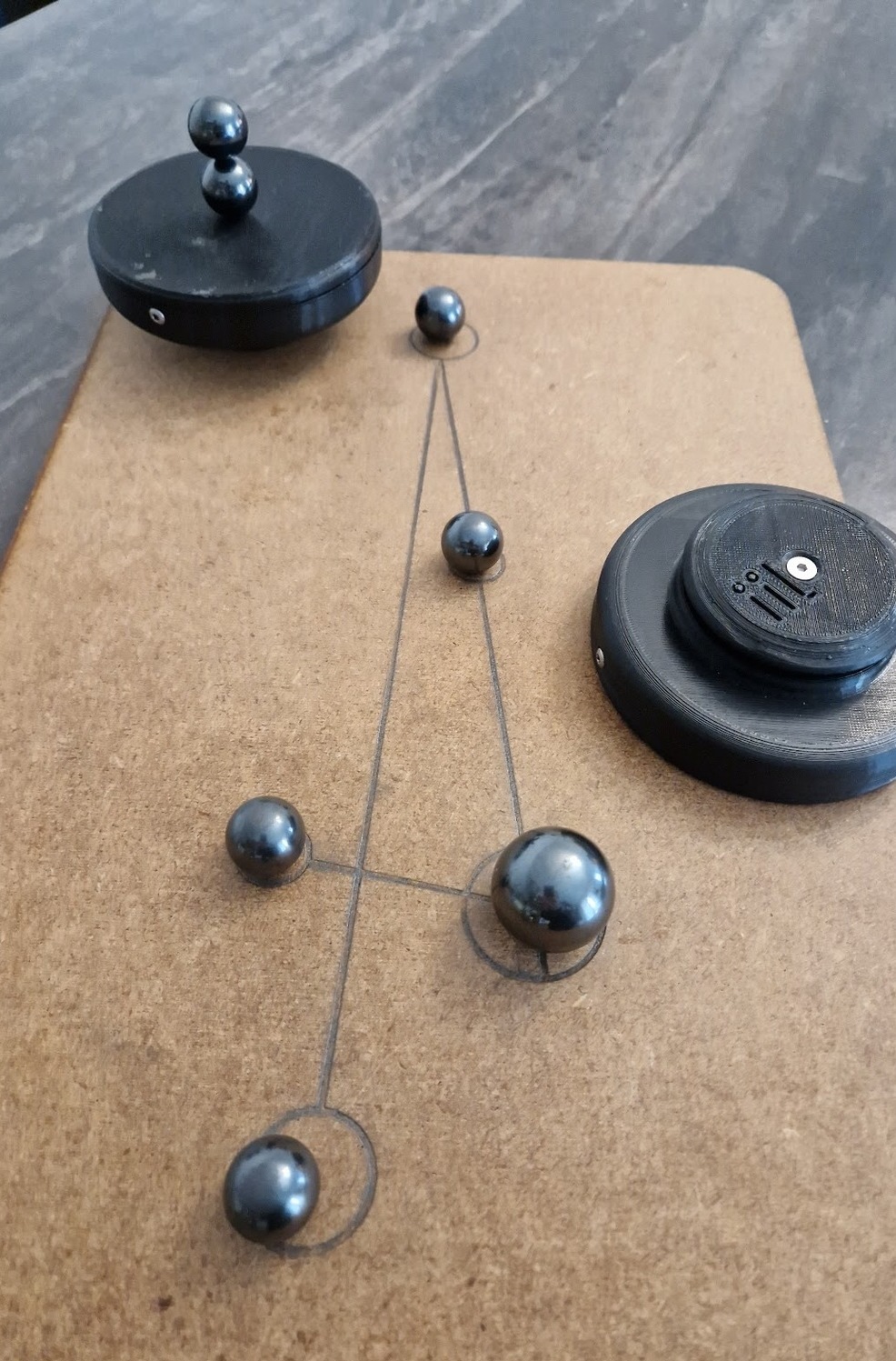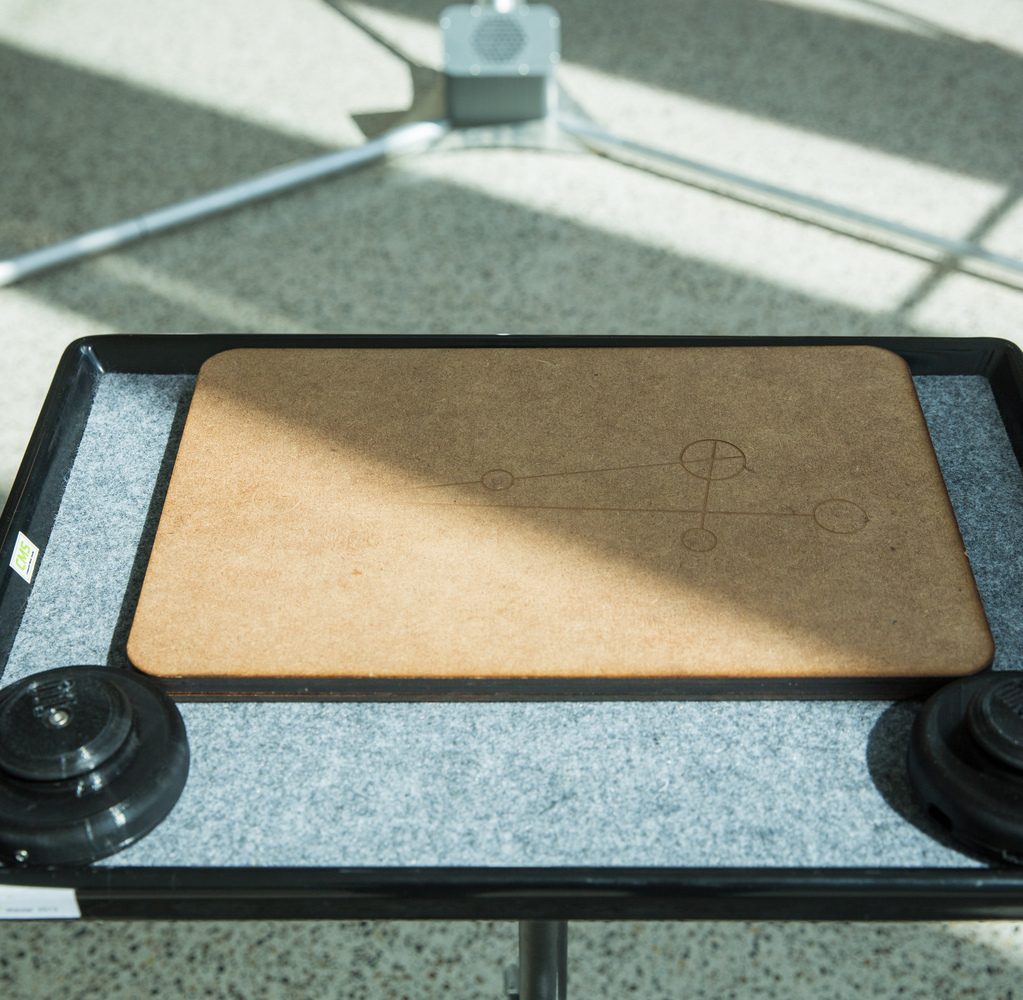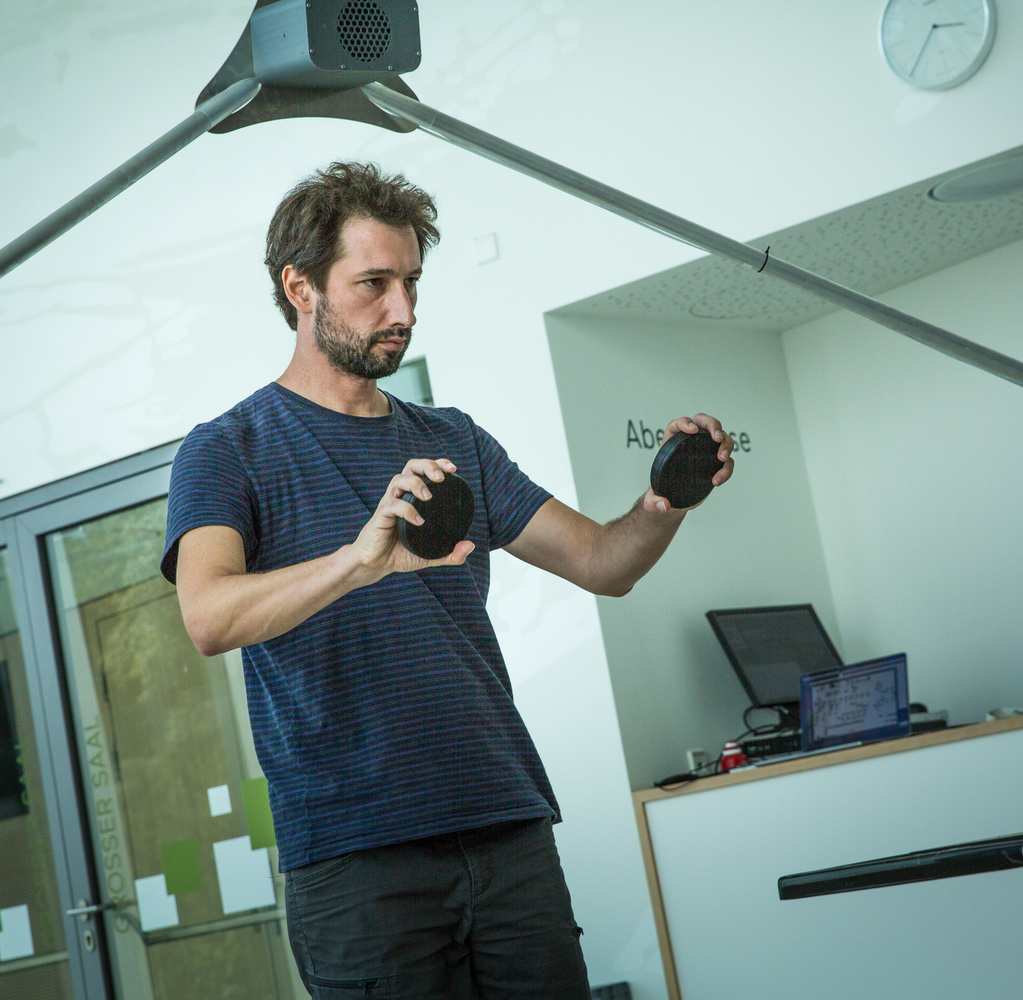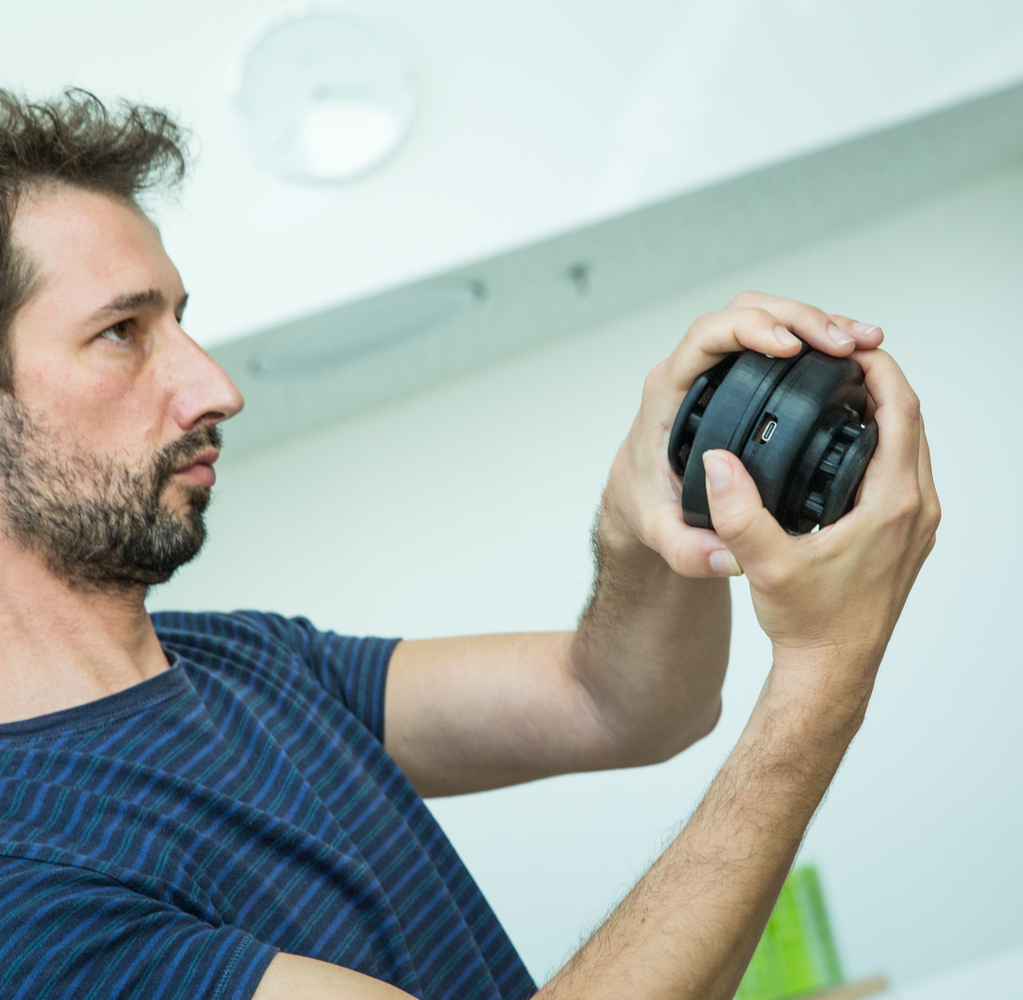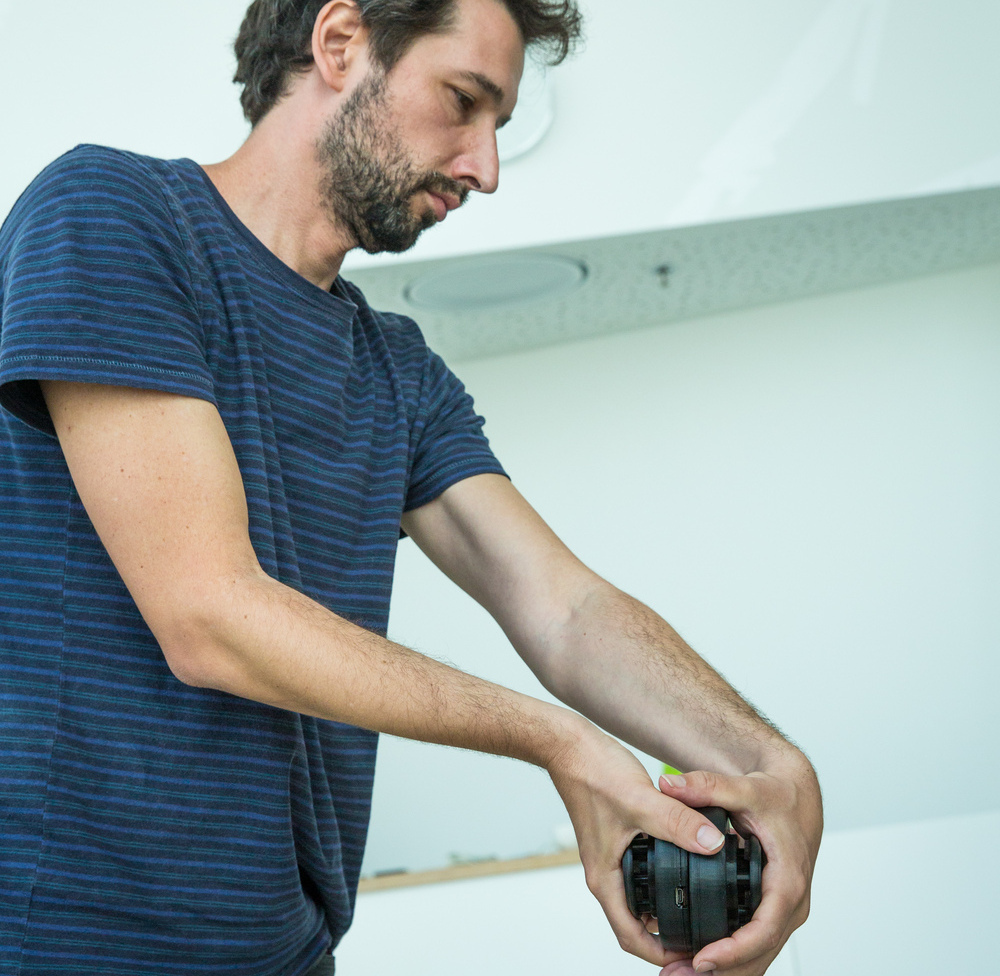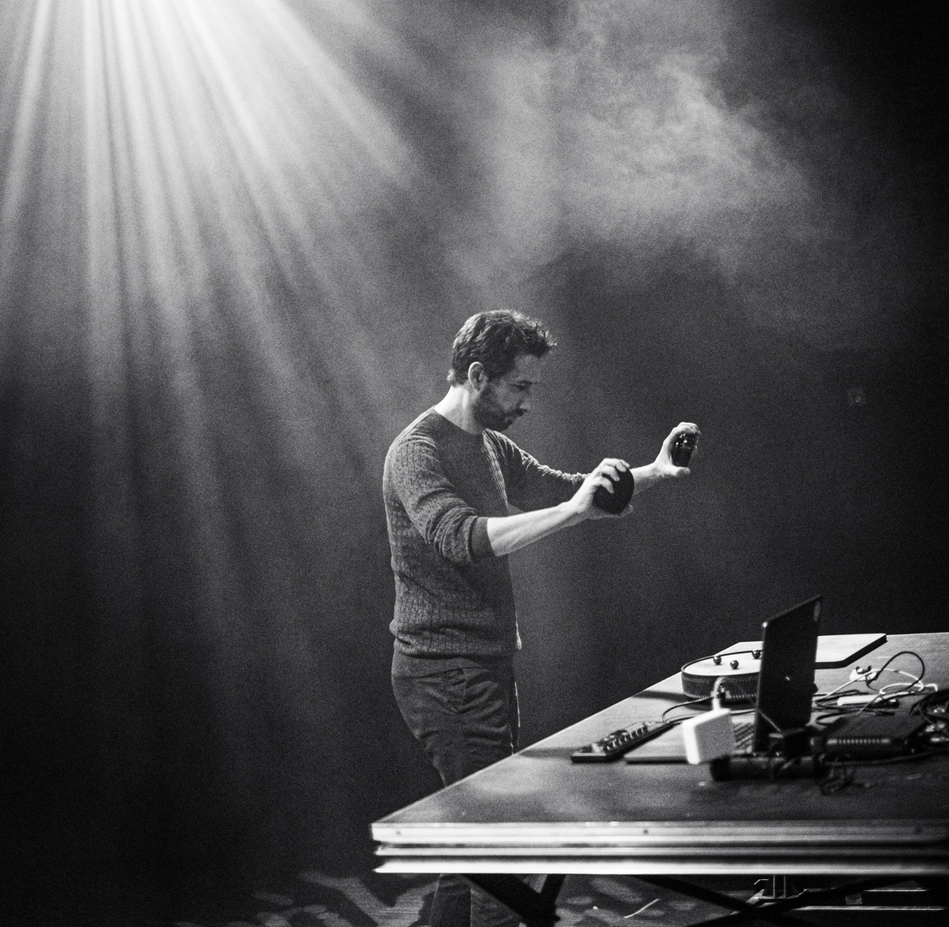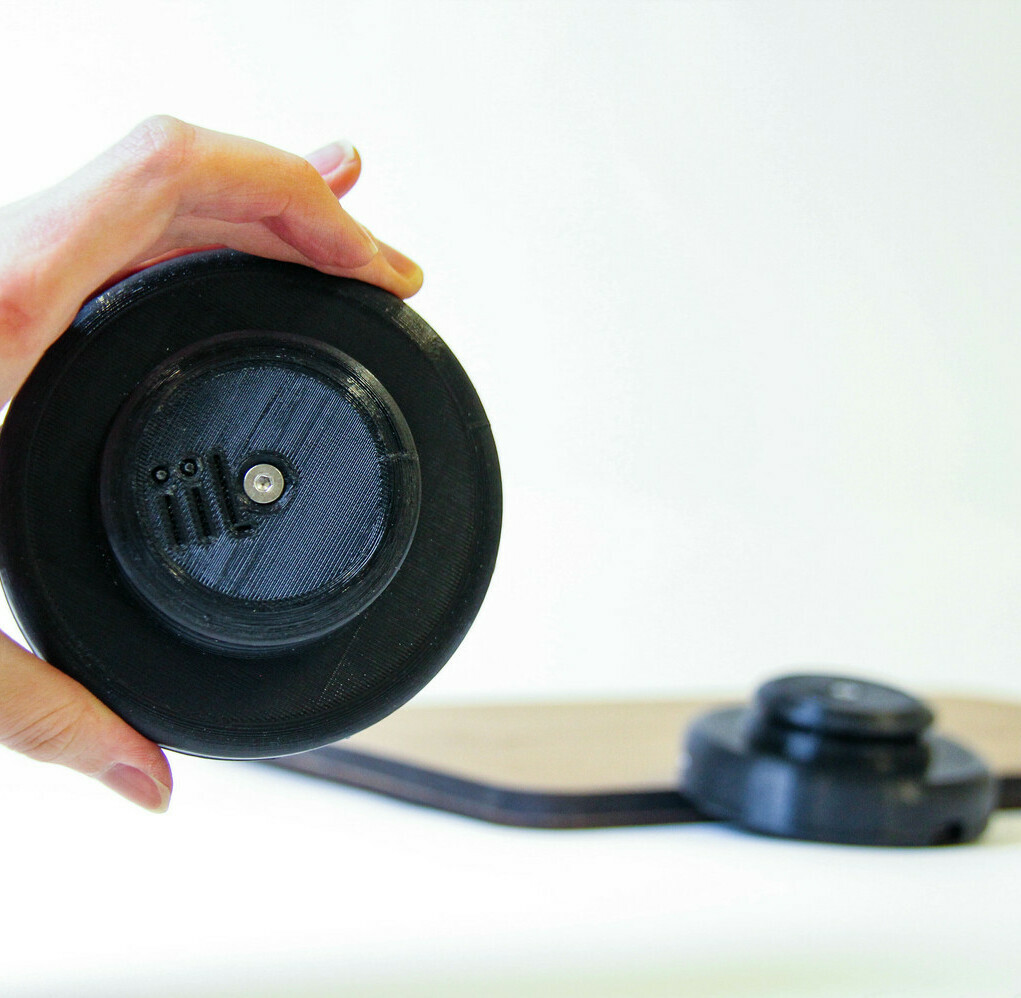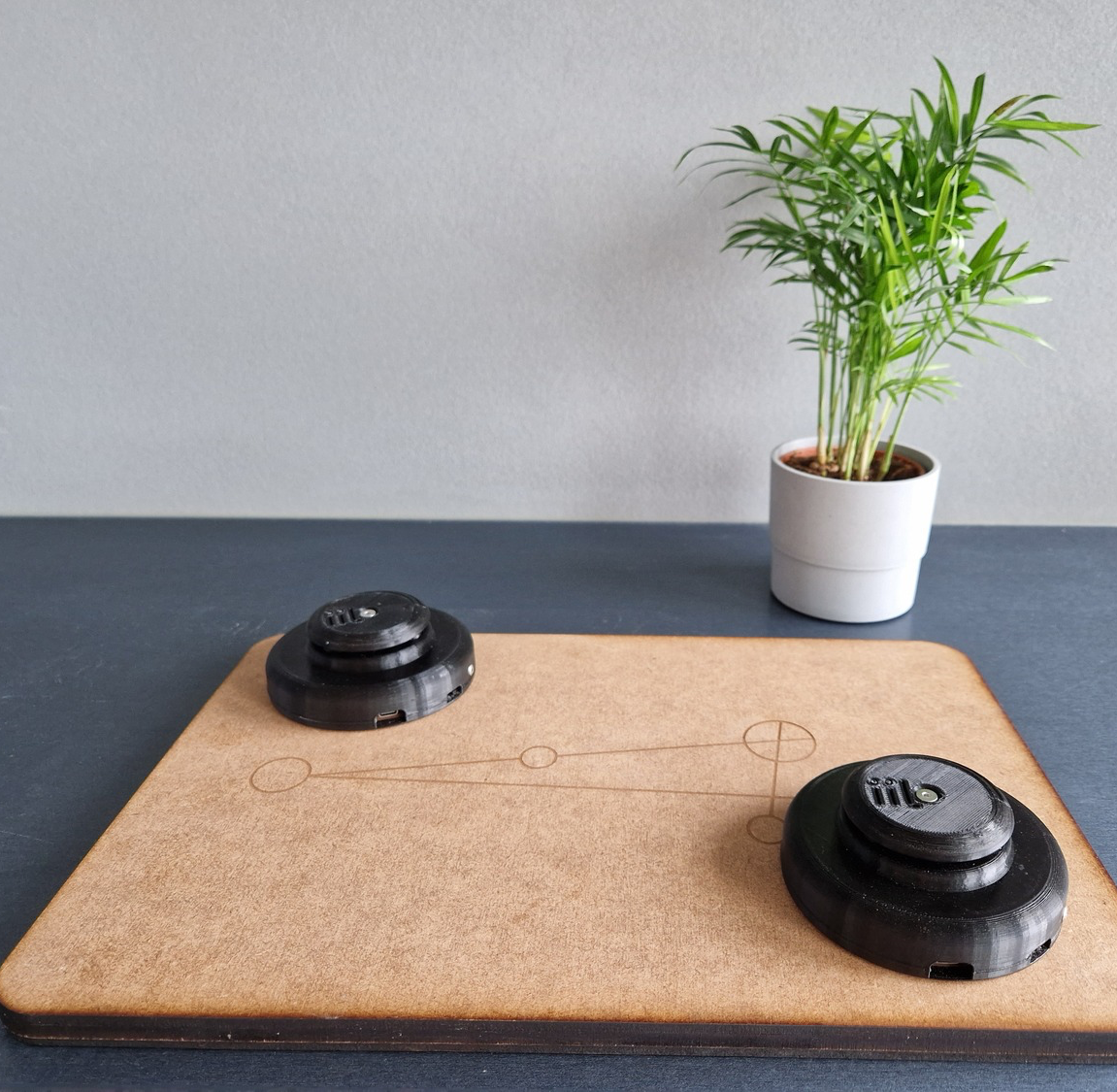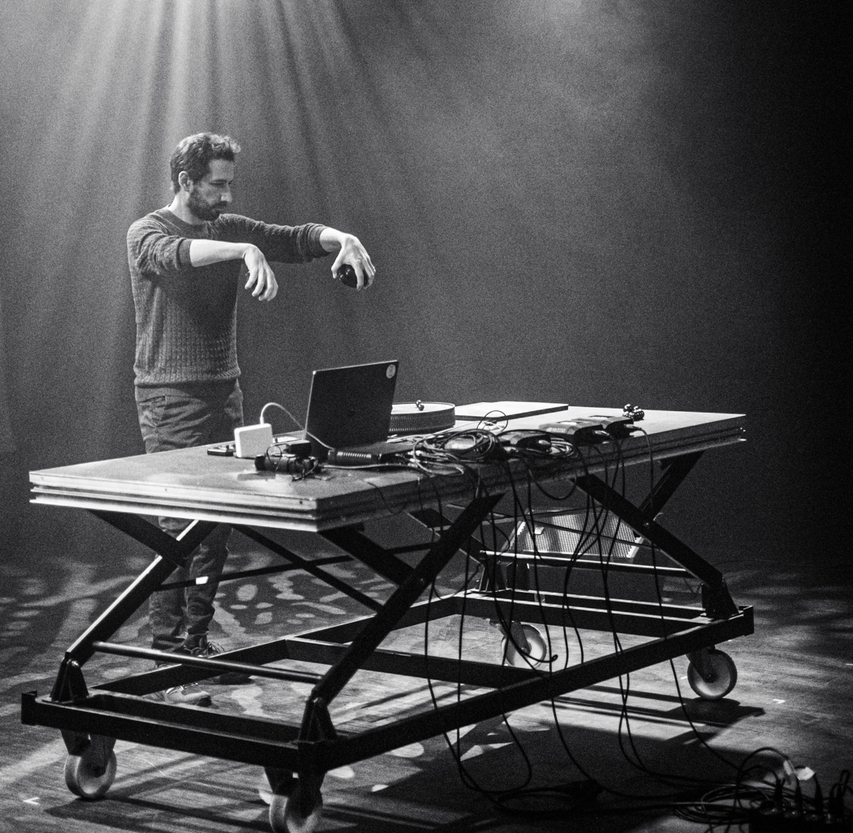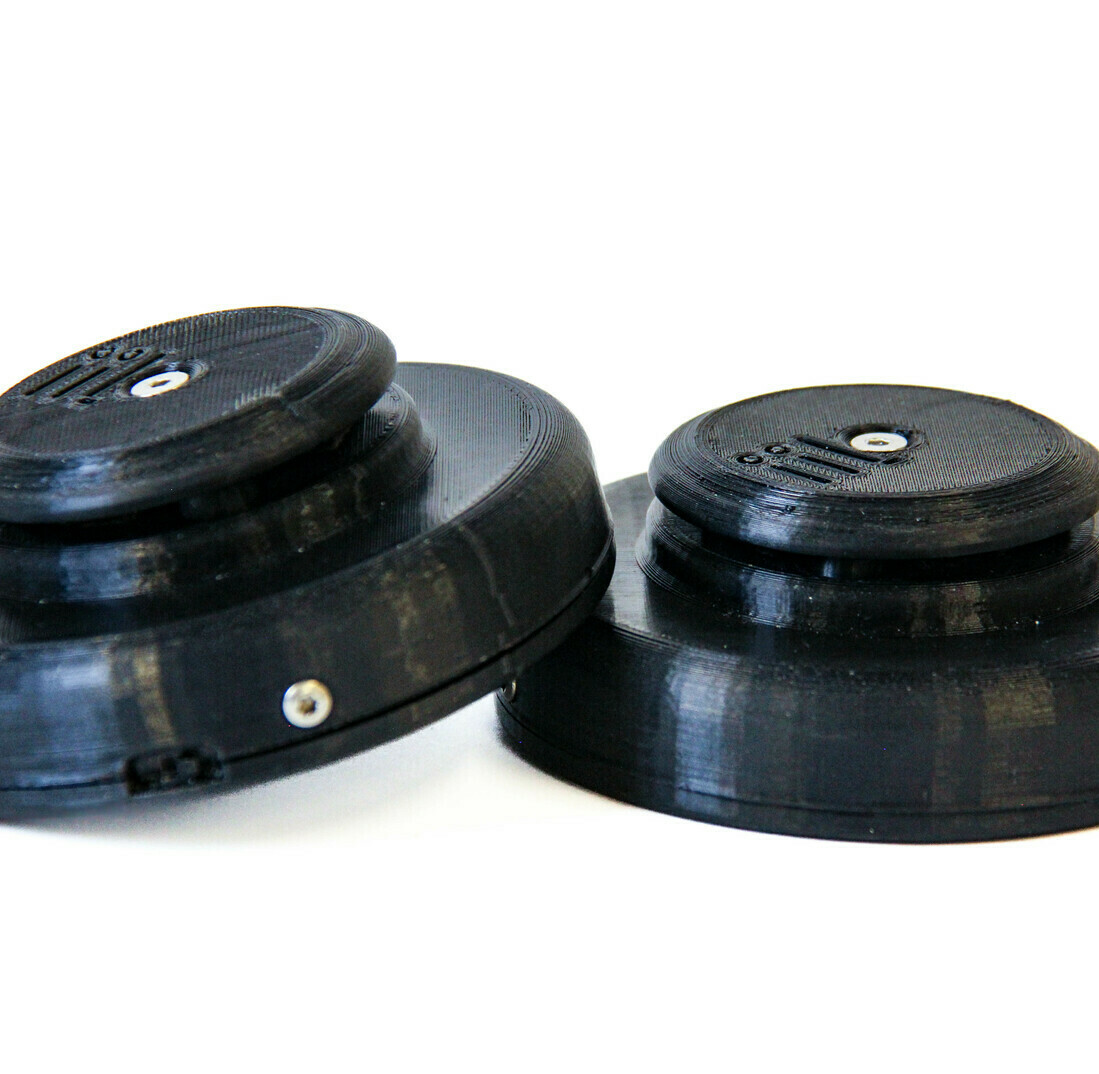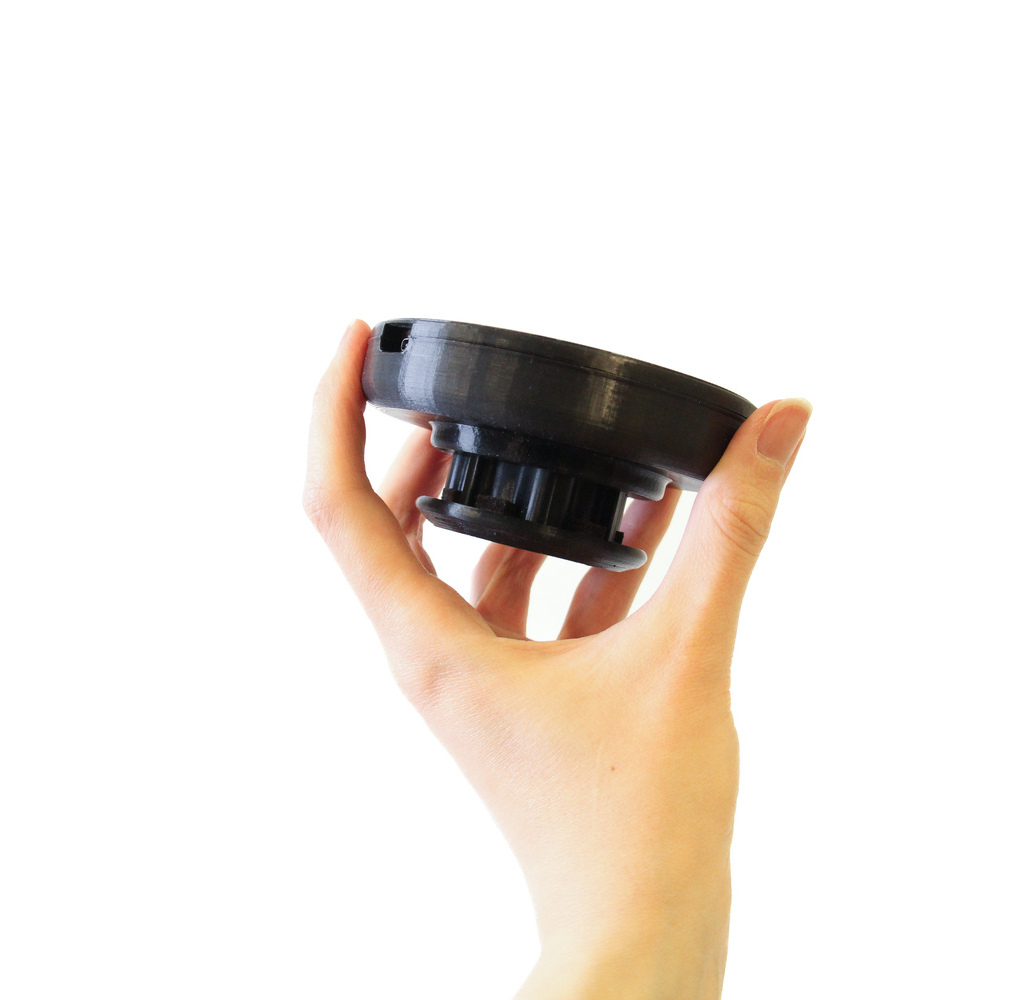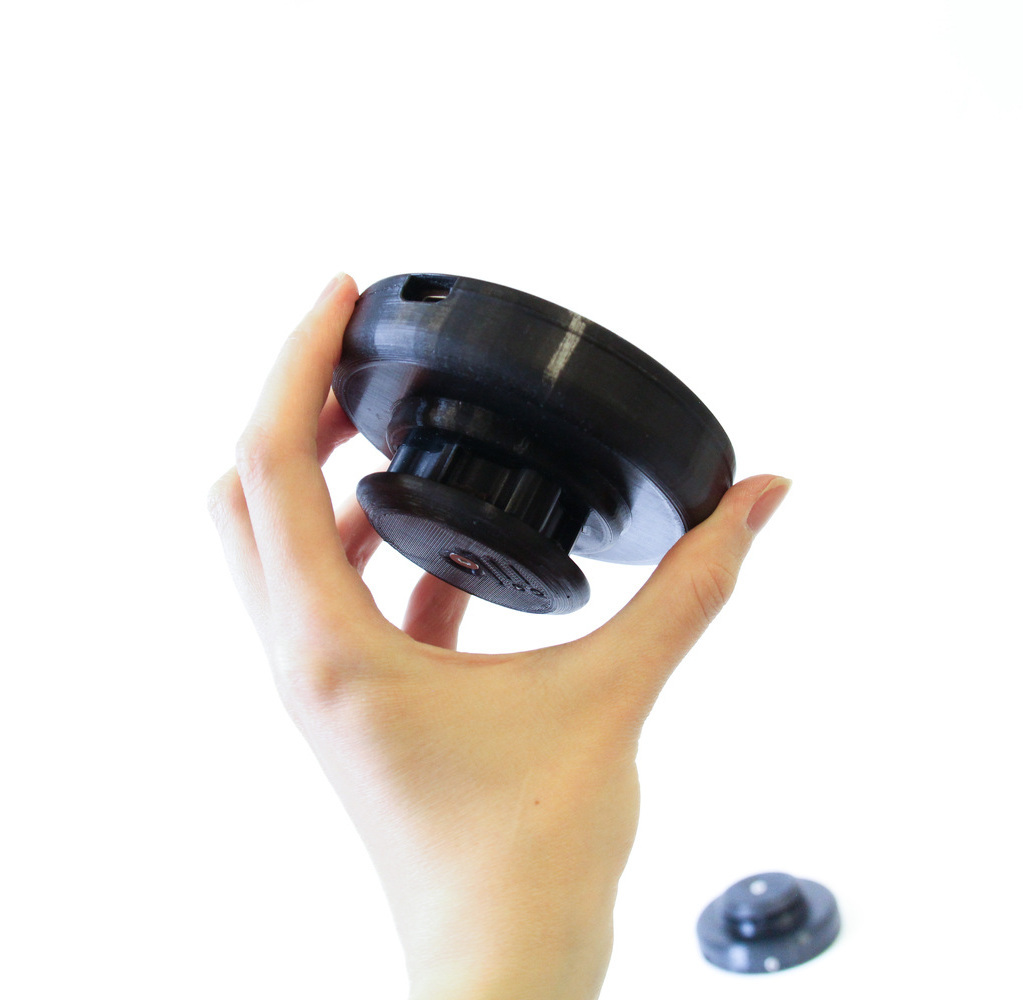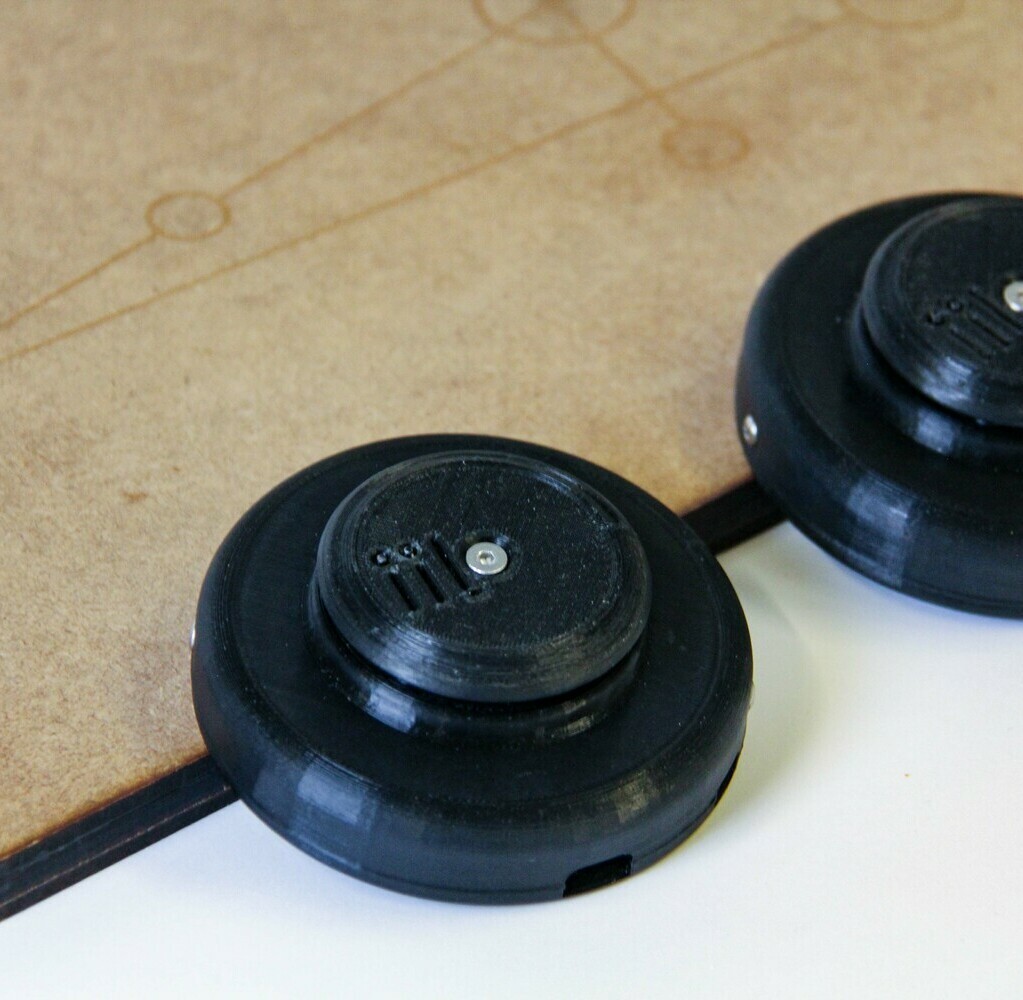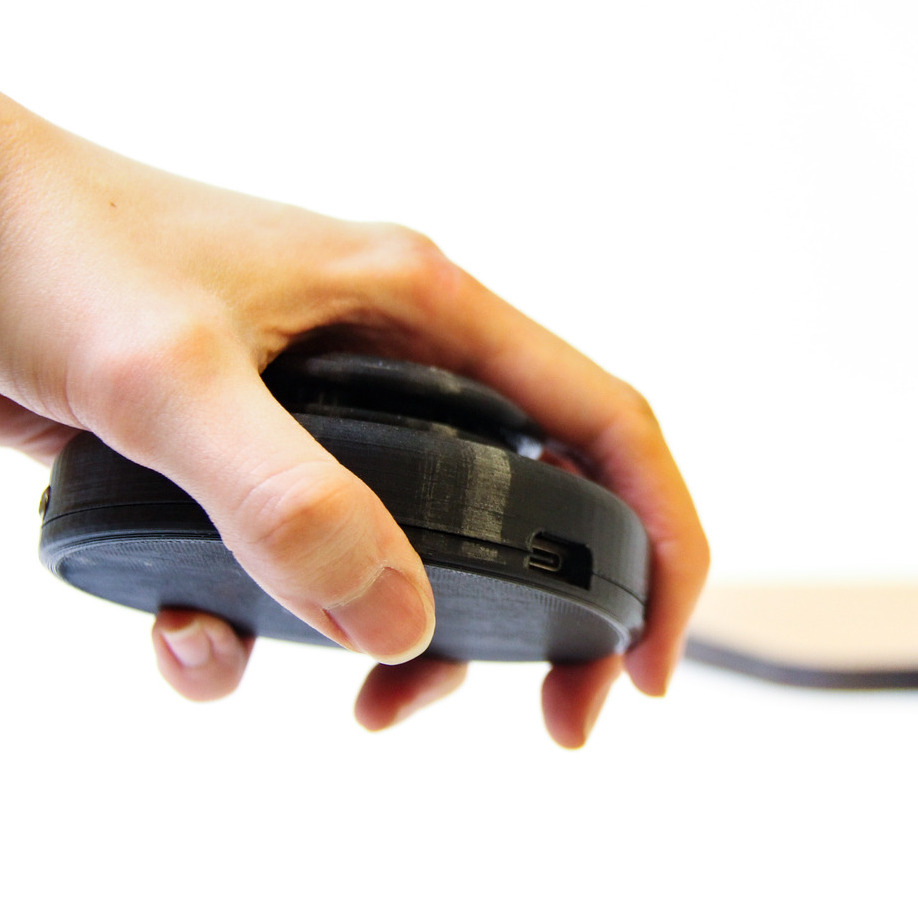To build your own: https://github.com/Intelligent-Instruments-Lab/Thales
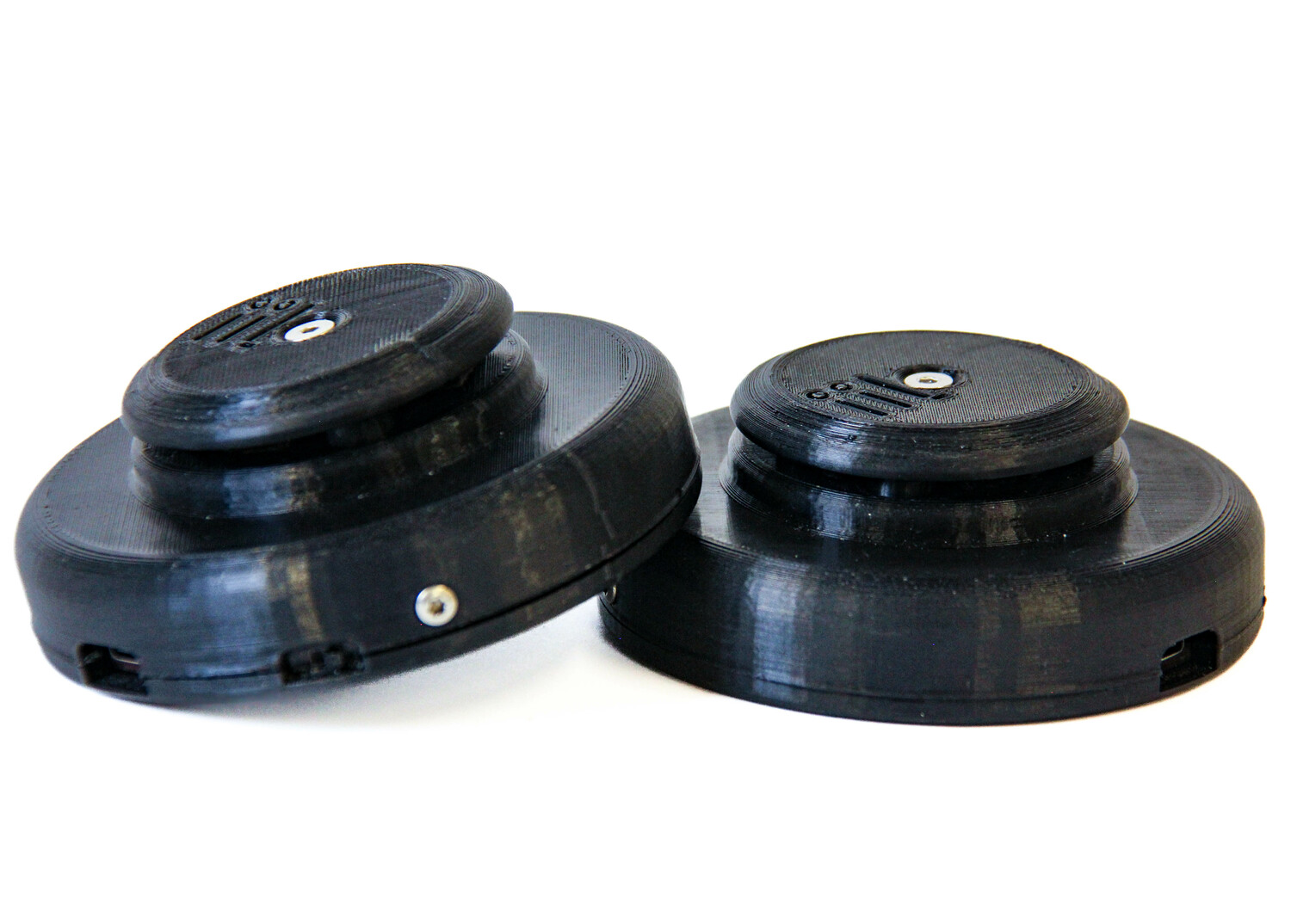
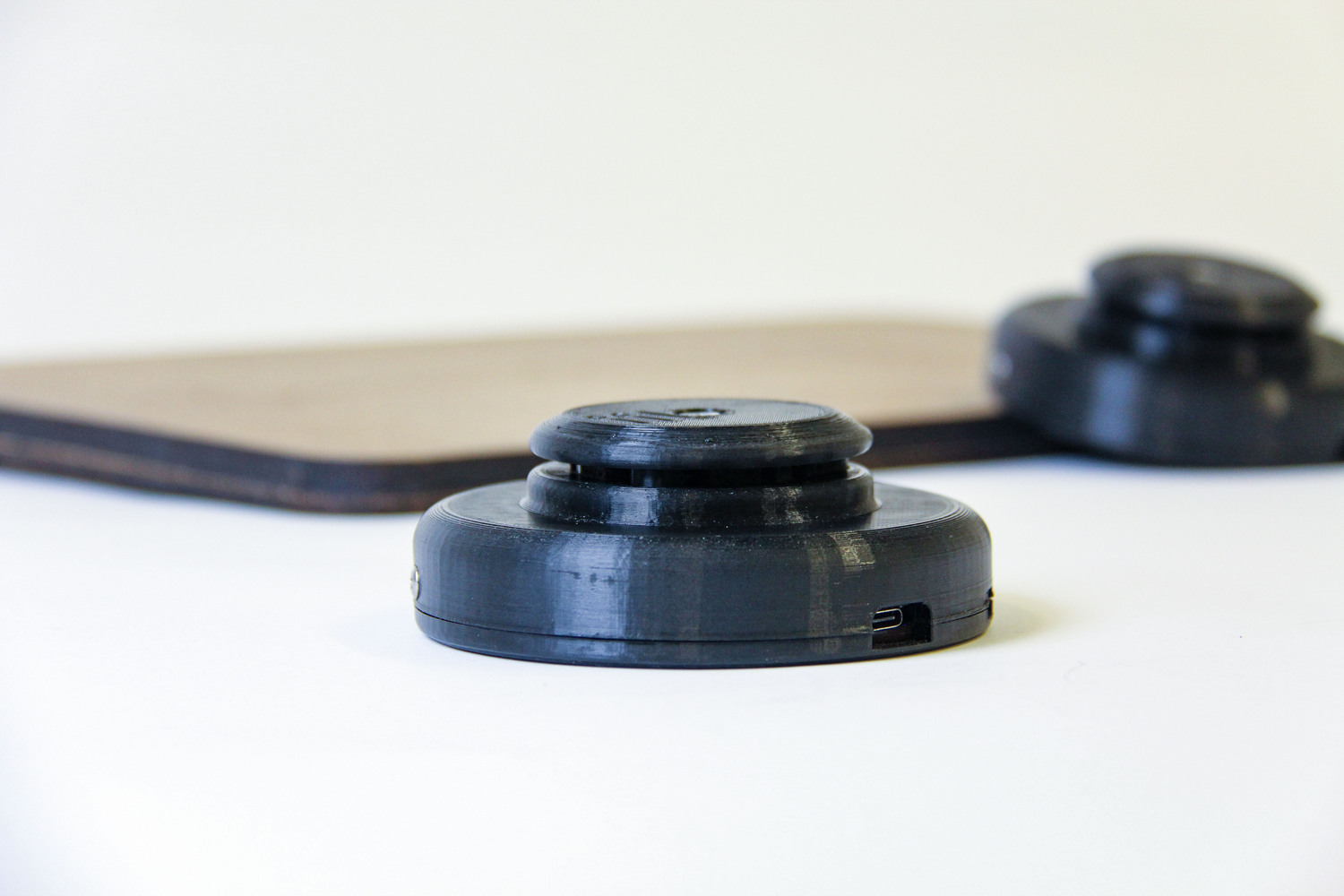
Thales_demo
Processing video...
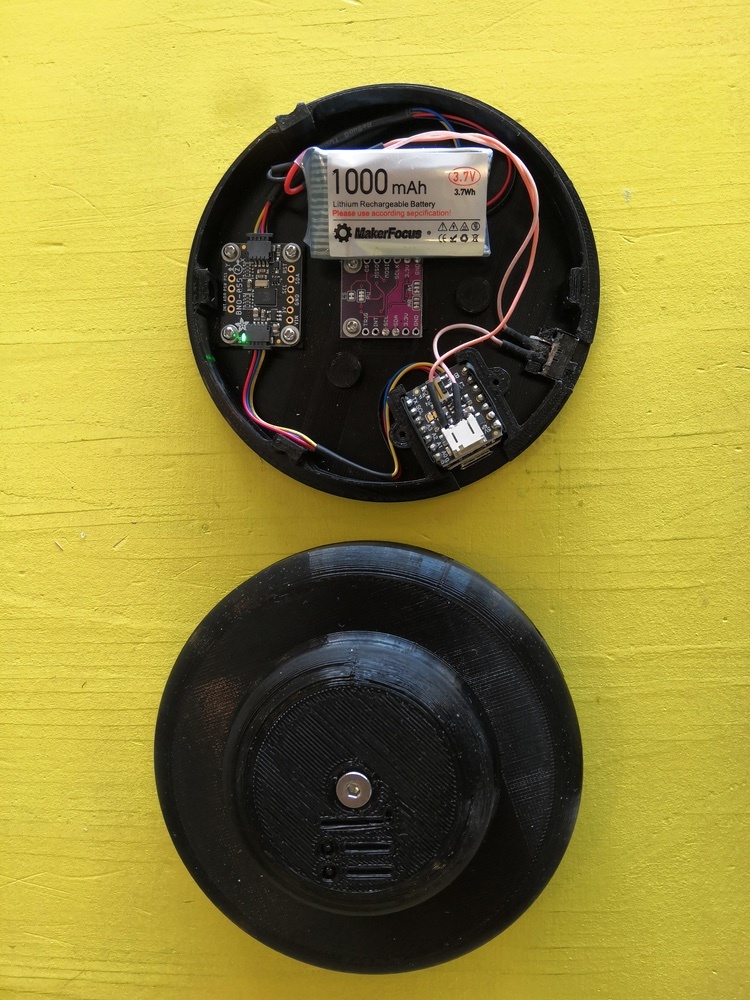
Thales is a composed instrument developed at the Intelligent Instruments Lab, based on two wireless controllers that interact with each other through their tangible magnetic fields. Its name comes from Thales of Miletus, the philosopher who described magnets as "having a soul".
In interaction design applications, it is common to use magnetometers to detect nearby magnets. But the novelty of Thales is that on top of the magnetometer is placed a stack of powerful magnets: as the discs detect nearby magnetic fields, the user tangibly interacts with them through the reciprocal attraction and repulsion of the magnets.
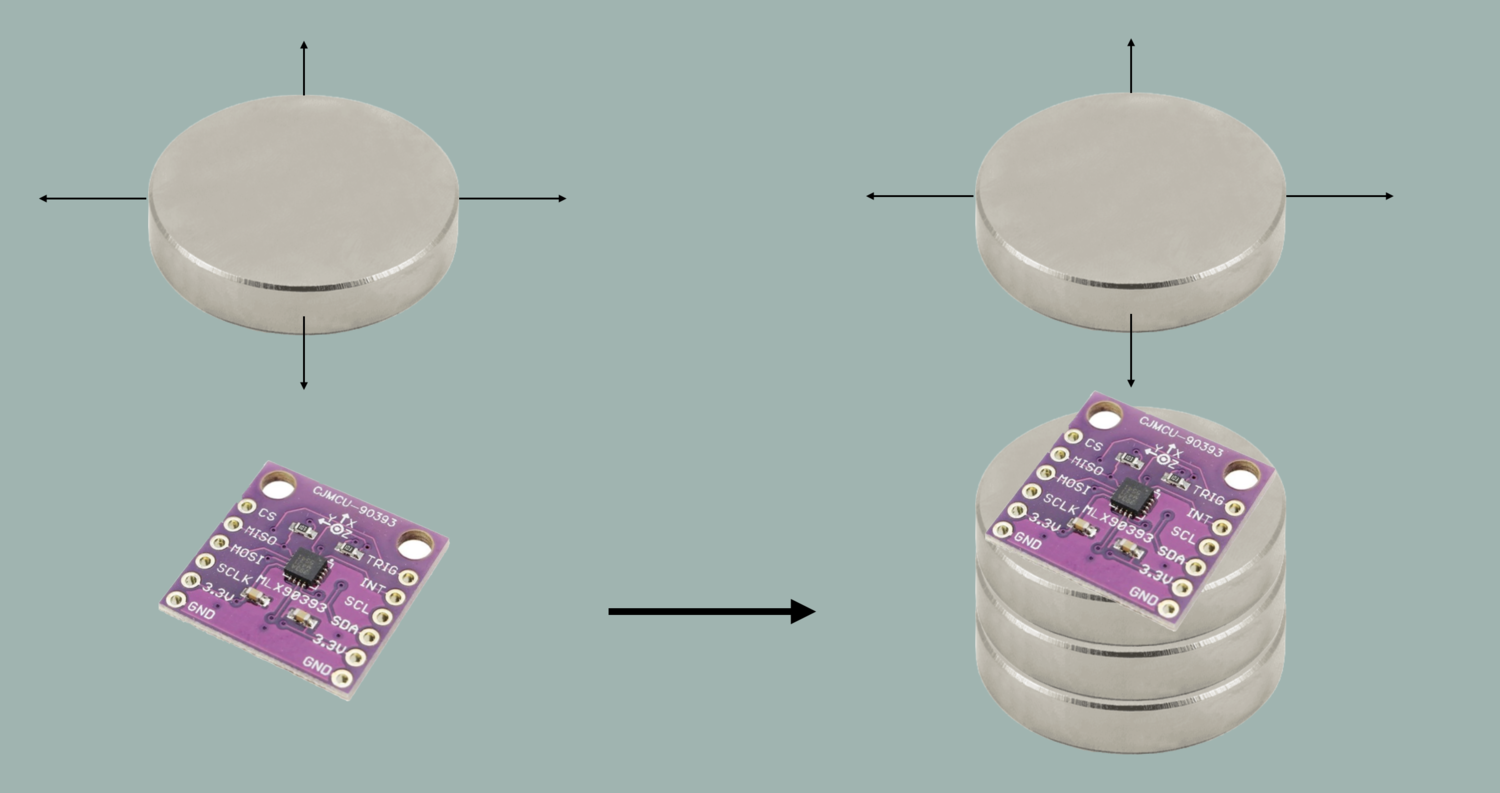
Each controller contains a stack of magnets, a magnetometer and a gyroscope. When the performer joins the controllers, these repel each other allowing him to play with the tangible manifestation of their opposing magnetic fields as a sort of invisible yet tangible entity, where the acceleration and orientation of the discs, intertwined with the position and strength of the magnetic fields, defines parameters of the sound.
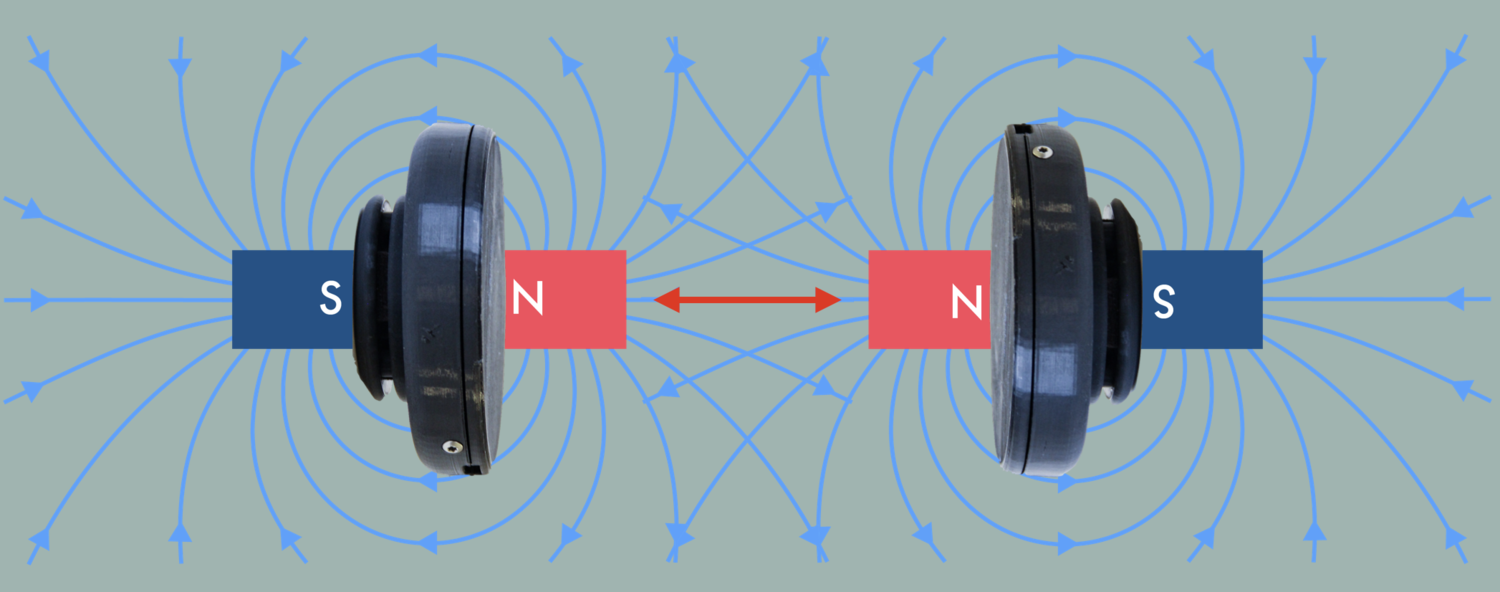
Alternatively, it is possible to entangle the controllers with any magnetic field or ferromagnetic object, creating magnetic scores by embedding magnets under two or tri-dimensional surfaces, or by exploring ferromagnetic objects in the performative space as sources of gestures and sound.
By placing a set of magnets on top of a three-axis magnetometer, the vertical reading of the three-axis magnetometer becomes unavailable. Thales turns this limitation into a feature: in each of the discs the magnets are encapsulated in a vertically movable lifter, held in position by the player's palm. When a magnetic field is encountered the lifter pushes on the performer's hand. By releasing the pressure of the hand the riser moves up and the reading of the vertical axis is unlocked and finally controllers, similarly to the coulisse of a trombone.
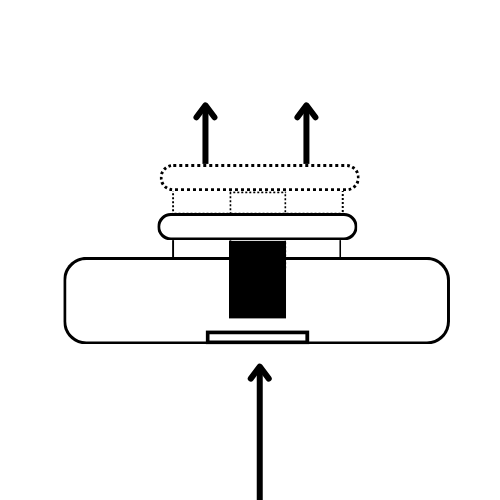
Thales_z_readings
Processing video...
Thales can control any synthesis engine, but I developed it to investigate the design strategies around Neural Audio Synthesis (NAS). Thales uses RAVE, a NAS model for real-time interaction designed by Antoine Caillon at IRCAM in 2021. The model is trained on a dataset based on the sounds of magnets, bounced on each other or against wooden surfaces. Hence the composed nature of this instrument where the magnetic materiality defines the sound. This is combined with an FM synthesizer on the right controller's lifter and a pitch shifter on the left one.
Thales was featured at NIME 2023, Ars Electronica 2023, and is one of the winners at the Guthman Competition, 2024 edition, at Georgia Tech (3rd prize).
An Introduction to Thales
Thales
Processing video...
Thales at Tangible Music Lab, Linz, on the Dodekaotto system (binaural)
The Magnetic Score
Processing video...
Thales at DodecaOTTO (1)
Processing video...
Gallery
Thales at NIME 2023.
